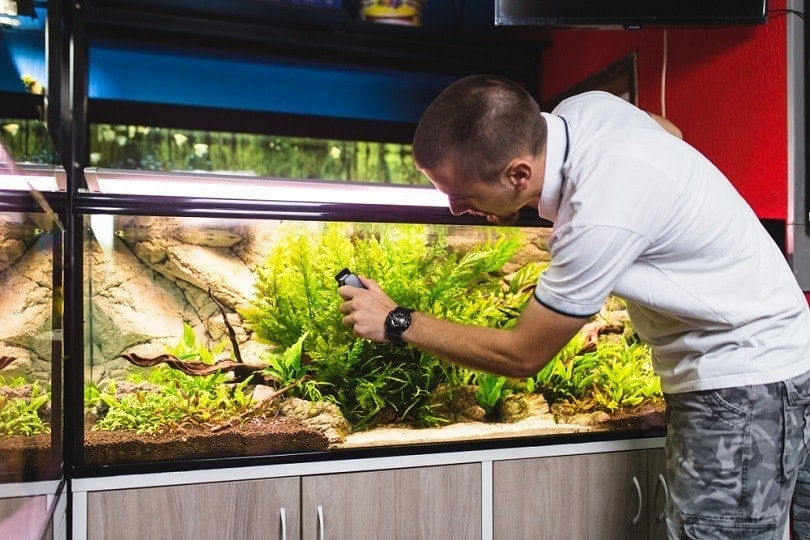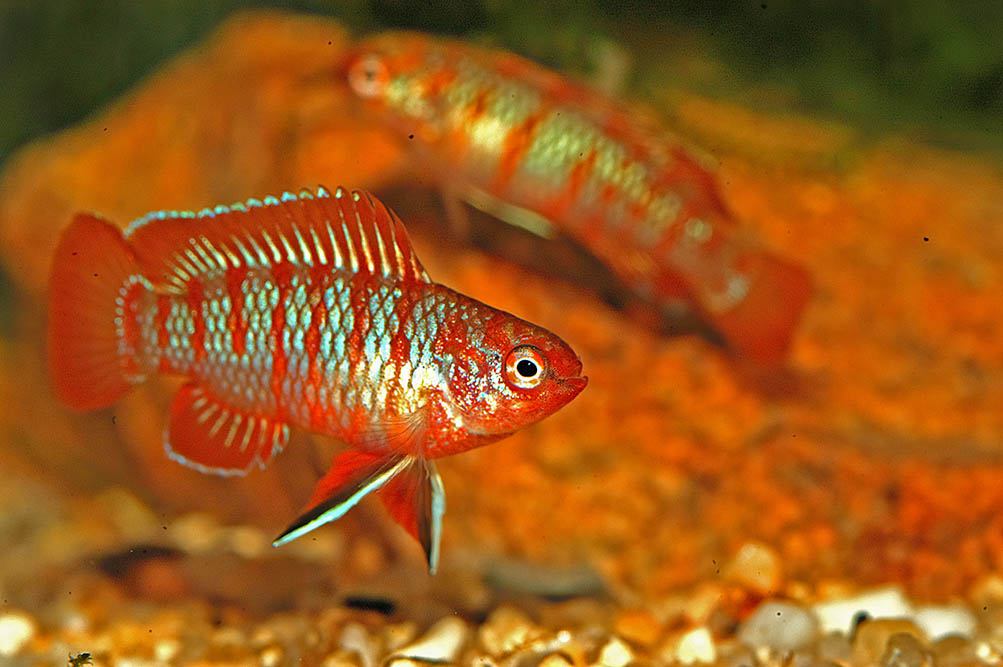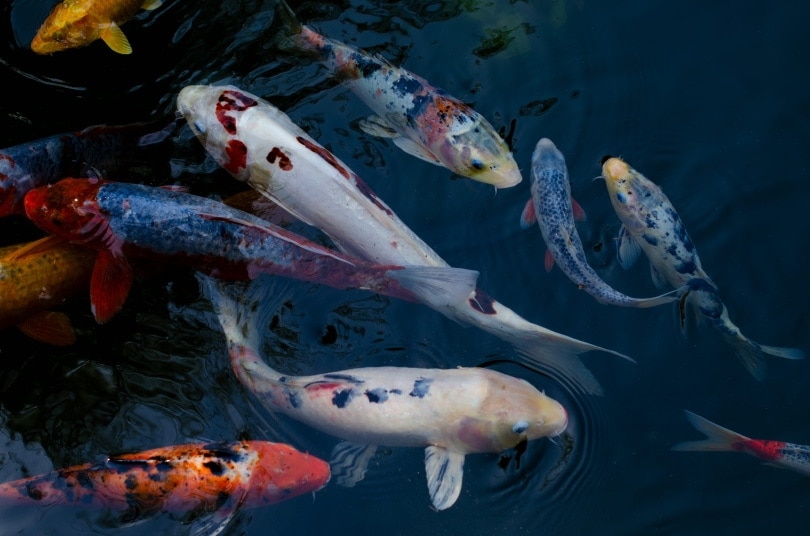Beware of Mystery Snails (that Are Not Really Mysteries!)

Updated on
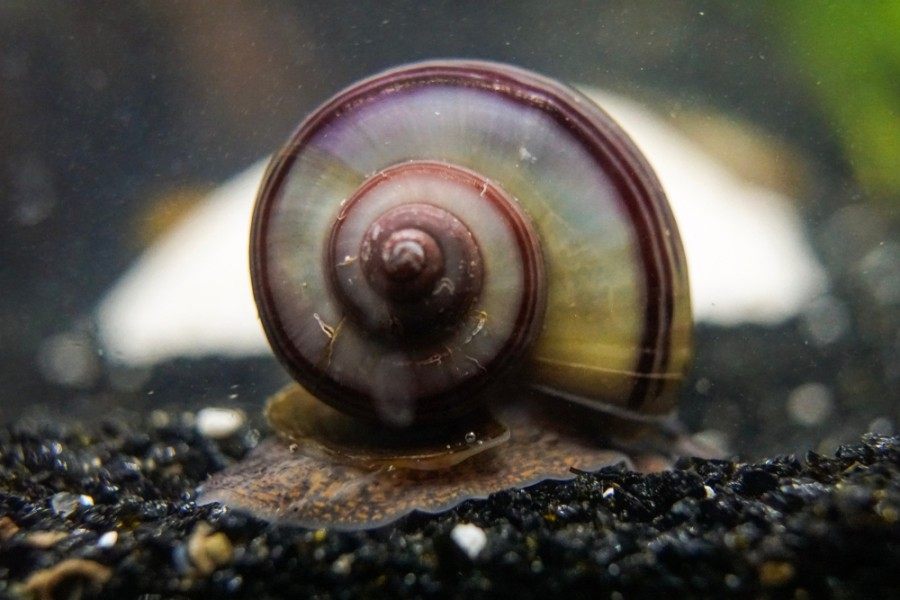
OK, snail/fish people, There are a couple of types of snails that sometimes get confused with what we call “mystery snails.” They’re called the “channel apple snail” or “island apple snail.”
These snails can be found in the wild in some states in the US, especially Florida, Texas, and California, along with some southern states.
Problems With These Snails
I’ll preface this by saying these snails are not always bad in certain situations. But a lot of people don’t know about the not-so-great parts. Especially if they think they’re buying a mystery snail…when they’re not.
1. They eat plants like there’s no tomorrow
If you want a beautiful planted tank or a tank with even just a few live plants in it, you don’t want one of these snails. You may as well put an aquatic cow with a shell in your aquarium.
Because the snails will thank you for the salad and be on their way looking for more once your entire tank is decimated. Unlike the harmless true mystery snail, which does not eat plants unless the plants are dead or dying or they’re starving to death.
2. They get huge (as in, HUGE)
Have you ever seen a snail the size of a tennis ball? You will after you meet an adult cana or island snail. Just look at this guy:
3. They can carry several diseases
““P. canaliculata is of serious human health concern in a number of regions as it acts as a vector for a number of parasites that cause human diseases, including schistosomes that cause dermatitis and a fluke that causes intestinal problems (Hollingsworth and Cowie, 2006). Most notably, however, it can act as a host of Angiostrongylus cantonensis, the rat lungworm, which can infect humans if ingested and cause potentially fatal eosinophilic meningitis. […] Although many species of gastropods can act as hosts of A. cantonensis (Wallace and Rosen, 1969; Kim et al., 2013; Thiengo et al., 2013), P. canaliculata is of particular significance in southern China, where it has become a delicacy when eaten raw, resulting in numerous cases of angiostrongyliasis (Lv et al., [2009], 2011; Cowie, 2013; Yang et al., 2013).”
^ Perhaps why some people only handle them with gloves.
Seems disease is more prevalent in canal-caught snails:
“Golden apple snails, Pomacea canaliculata, were collected once a month during a year to search for their natural parasites. The collections were made at two localities having different ecological environments. Of 576 collected snails from a canal, 176 individuals (30.6%) were infected by three groups of metacercariae. These parasites were amphistome, distome and echinostome metacercariae, which had prevalences of 23.5, 19.5 and 0.5%, respectively. The incidence of infection was highest (68.4% in October) when the snail population was composed of the old, juvenile and young Pomacea. […]The snails from a pond, another locality, had a low proportion of infected individuals. Of 605 snails, only 24 individuals (4.0%) were infected, with the prevalence of amphistomes, distomes and echinostomes being 0.8, 1.8 and 2.1%, respectively. The incidence of infection for each month was zero or less than 10%, except in May when it was 30.2%.”
Regular mystery snails can indeed be a vector for the rat lungworm, but in aquarium-raised snails, it’s virtually a non-issue. On the other hand, the big monster snails are often wild-caught, so they can harbor who-knows-what.
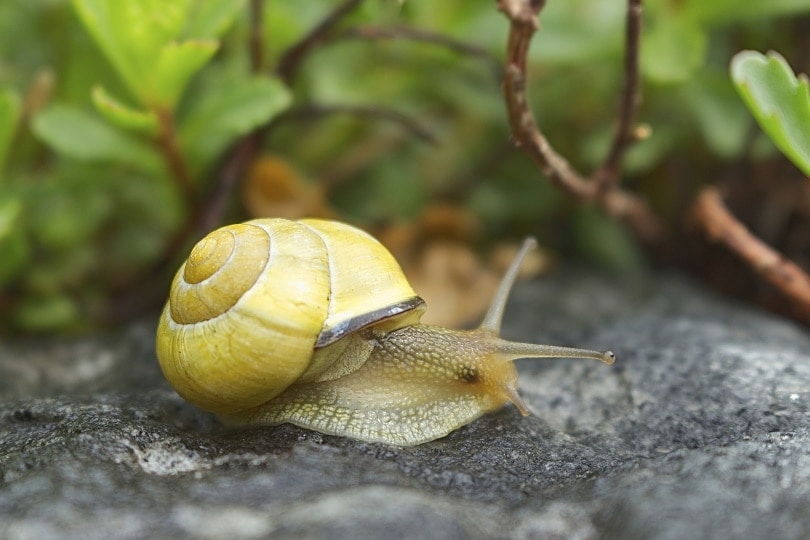
4. They are illegal to ship across state lines
Some states don’t even allow you to have them as pets. Both are ILLEGAL to ship across state lines. It’s really important that you check the laws in your area first before deciding to get one of these.
5. They are invasive species
“This species has a well-documented history of invasiveness and has caused crop damage resulting in considerable economic losses as well as macrophyte damage in native wetlands.” – https://www.fws.gov/fisheries/ans/erss/highrisk/ERSS-Pomacea-canaliculata-FINAL-March2018.pdf
As a classified pest, they multiply like CRAZY! They can also have negative effects on biodiversity and native habitats. If they get loose in local areas, they can be just devastating.
How to Tell the Difference?
So, we’ve got …
Mystery snails (Pomacea diffusa)… (pictured below)
Channel apple snails (P. canaliculata)… (pictured below)

Island Apple Snails (P. maculata) (pictured below)
Which is which?
Snail expert Matt Reinbolt weighs in:
“Aside from size and diet, P. diffusa doesn’t have channeled sutures, they’re flat. And they [mystery snails] have more prominent shoulders and a more consistently higher spire. P. diffusa also lays white eggs that turn pink-beige, whereas P. maculata and P. canaliculata lay brighter pink eggs. And P. maculata in particular lays way more eggs, that are smaller in size. P. diffusa is also bred in more colors. The others do not yet come in purple or magenta varieties, or even blue.”
Note the hot pink eggs in this video:
A good indication that the snail is not a mystery snail is when the shell is dark-striped with a greenish hue or when it is much larger than normal
Mystery Snails (Usually) the Better Option
Mystery snails are perfectly legal in all 50 states. They come in the popular “designer colors.” If you want a planted tank? No problem.
They are peaceful, cute, and friendly, and they won’t get much bigger than a golf ball (some never get that big either).
You don’t have to worry about causing an environmental disaster or possibly breaking the law.
Final Thoughts
There is definitely an appeal that the big apple snails have for people. I mean, they’re pretty rare in the hobby. And a snail the size of a softball? Talk about a conversation piece! But I’d caution those who keep them to understand the situation completely before keeping or selling them. It’s not to say these snails are evil or anything; they are just different.
And not as practical for most people as you would think. The main thing is you probably need to know what you’re getting ahead of time before things don’t go according to plan. They are only suitable for aquariums without plants.
So, what are your thoughts? Have you ever had one of these as a pet? Let me hear from you in the comments below.
Related Reads:
Featured Image Credit: Adam_Nau37, Shutterstock



